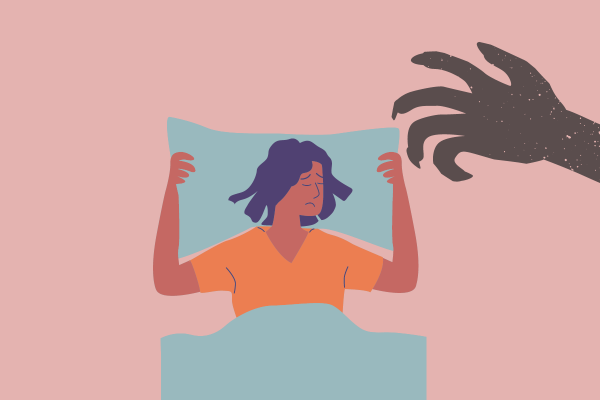“Post-Traumatic Stress Disorder” is the second of four articles in series on mental health awareness by Abbie Call. Read the next article, “Bipolar Disorders,” here.
After anxiety and depression, post-traumatic stress disorder is the third most common mental disorder.
Post-traumatic stress disorder, or PTSD, affects 3.6% of the United States population, which is maybe one in a group of 30. What is PTSD? And what can you do for somebody you care for who struggles with PTSD? We are going to learn about it together.
What Is Post-Traumatic Stress Disorder?
Post-traumatic stress disorder is most known for ailing soldiers who have returned from traumatic events at war. But it can be caused by any traumatic event, like a natural disaster, a car accident or sexual assault. It can also be brought on by a sudden, unexpected death of a loved one.
PTSD was formerly classified as an anxiety disorder. In 2013 the 5th Diagnostic and Statistical Manual of Mental Disorders, or DSM-5, put the disorder in its own category.
Similar to an anxiety disorder, PTSD puts people into constant “fight-or-flight” with an increased sense of alertness and fear. With PTSD, these symptoms continue long after a certain traumatic event.
PTSD, unlike anxiety, creates a situation in which people are often reliving the traumatic event. They feel constantly vulnerable and in danger, which can cause them to mistrust or be angry with the people they love.
According to MedlinePlus, symptoms of PTSD are divided into four categories: 1) re-experiencing, 2) avoidance, 3) arousal and reactivity, and 4) cognition and mood.
The following are some of these symptoms:
- Flashbacks (1).
- Nightmares (1).
- Avoiding places, events, objects, thoughts or feelings related to the traumatic event (2).
- Being easily startled and tense (3).
- Having angry outbursts (3).
- Trouble remembering important things about the traumatic event (4).
- Feeling blame and guilt (4).
A health professional will diagnose PTSD based around patients having one re-experiencing symptom, one avoidance symptom, and two arousal and reactivity, and cognition and mood symptoms in one month.
What Can You Do?
Even though PTSD can seem scary and difficult for loved ones and people suffering from it to deal with, there is actually a lot you can do to help. PTSD is sometimes accompanied by depression. You can read about how to help with depression here.
Following are some ways loved ones can help someone with PTSD symptoms specifically:
1. Provide face-to-face social support.
Support from friends and family can be very helpful for someone struggling with PTSD. Trauma experts say this can be the most important factor for recovery. Let your loved one talk about the event over and over again if they need to. But also recognize when they don’t want to talk or when to take a break, for both of your sakes.
2. Know their triggers.
Triggers are anything that reminds the person of the traumatic event. They can set off flashbacks in people with PTSD. Sometimes these triggers are certain people or sounds that accompanied the event, but sometimes they are more difficult to pinpoint. They could be specific feelings, or a music genre, for example.
3. Share positive distractions.
Rhythmic exercise can be really good for mental health as it can offer a healthy distraction and feel like something “normal.” Going on walks, taking an exercise class, or taking outings can all be healthy distractions.
4. Give them little daily proof that they are safe and capable.
People with post-traumatic stress are constantly on alert. Give them reasons not to expect danger. Keep your promises, set routines, and show them that they can be successful making their own choices.
People with PTSD should also work with a medical professional to find successful treatment through therapy or medication.
To dig deeper into learning about post-traumatic stress disorder, go to this journal article. Though it is slightly outdated (it follows DSM-4), it is still a good source for learning about symptoms and development of the disorder.
– by Abbie Call
Feature image caption: PTSD, caused by a traumatic event, can make a person relive that event over and over again through nightmares and flashbacks. But support from friends, family, and health professionals can do a lot to help a person recover. Courtesy of Abbie Call, The Byway.

Abbie Call – Cannonville/Kirksville, Missouri
Abbie Call is a journalist and editor at The Byway. She graduated in 2022 with a bachelor’s degree in editing and publishing from Brigham Young University. Her favorite topics to write about include anything local, Utah’s megadrought, and mental health and meaning in life. In her free time, she enjoys reading, hanging out with family, quilting and hiking.
Find Abbie on Threads @abbieb.call or contact her at abbiecall27@gmail.com.

